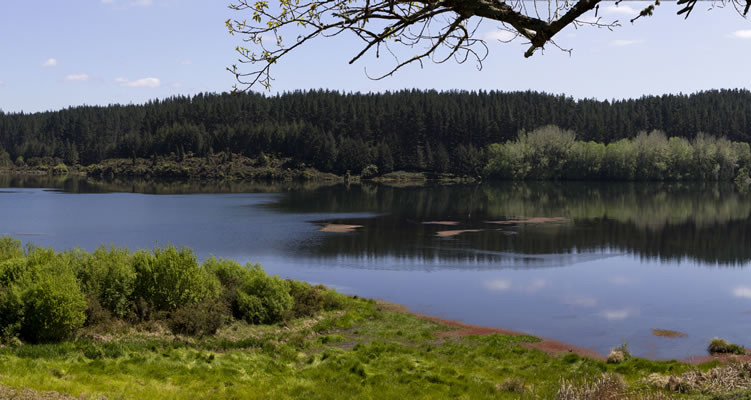By Polly Hatfield
We are often given a list of ‘must dos’ by family and friends keen to share their knowledge or experiences when we visit somewhere new. Before setting off on a recent trip to New Zealand I was no exception: I had scoured travel magazines and guides for highlights and picked the brains of friends whom I knew had visited the country. New Zealand is a country of such outstandingly beautiful and varied landscapes that it is hard, in hindsight, to choose a natural ‘highlight’: each new stretch of coast, mountain or lakeside seems to top the last. It would be easy, amongst such beautiful scenery, to neglect those regions that don’t feature in travel magazines and photography books, but to do so would be to miss out on the opportunity to understand the nation as a whole, to cross the line between ‘tourism’ and ‘travel’.
The town of Murupara and the surrounding area are rarely featured on tour itineraries as visitors bypass the region on their way from the tourist hotspot of Rotorua to the lakeside town of Taupo. The community is undoubtedly one with a troubled past. Murupara used to play a central role in the timber industry and saw a rapid growth in population during the early 20th century as the forestry based economy grew and people flocked to the region in search of jobs. The decline of the timber industry, however, led to inevitable socioeconomic complications, foremost amongst them the growth of gang culture and gang-related violence. The burden of this ‘wild-west’ reputation has of course hindered the growth of the tourism industry in what remains a naturally beautiful region, but there are encouraging signs of growth as Murupara residents work not only to reverse this perception but to promote sustainable tourism that will benefit the local community. Nadine and Karl ToeToe, for example, have lived in the region their whole lives, and now run Kohutapu, a lodge that supports education and a sense of cohesion within the community.
The couple are infectiously enthusiastic not only about the cultural heritage of the local area, but also about the capacity of tourism to generate positive change. Unlike so many of the ‘Maori cultural experiences’ on offer in the North Island, Nadine and Karl endeavor to engage visitors with the reality of their community as it is now, acknowledging the challenges it faces and ensuring that travelers are aware of the impact of their visit. One seemingly simple but immensely important way in which the couple have used their tourism venture to benefit local children is by providing schools with nutritious meals using leftovers from the lodge which they run just outside the town. Nades emphasizes the symbolic importance of ‘kai’ (food) in Maori culture, and whilst the ‘hangi’, or barbecue provided is an important part of the experience for guests staying at the lodge, all remaining food is then packed away in boxes and driven to the local primary school the following day. Nades is unequivocal about the impact that such a seemingly simple process has upon the children’s lives: “Times are tough for a lot of families since the demise of the forestry industry, and we are aware of the struggles many families face in our region. We know there are kids in our schools who don’t have breakfast or take packed lunches – so if our hangis can provide sustenance for those children who really need it, then that can only be a good thing.” Indeed in the first 18 months of its existence, the lodge delivered more than 5000 meals back into the community.
Beyond the practical benefits of providing children with nutritious food on a regular basis, the school visit also exposes them to cultures and stories with which they might otherwise be completely unfamiliar. For children growing up in Murupara this is key, as it reinforces the idea that their own futures need not be confined to the possibilities offered by criminal gangs within the local area and encourages a curiosity about foreign cultures and new experiences. “We need to be able to provide positive opportunities for our youth – something for them to aspire to and want to be a part of,” argues Nades. “Sometimes you can’t tell people, you just have to show them.”
After joining in with the children’s sport class we sat and chatted with them, answering enthusiastic questions about where we came from, where we’d been in New Zealand, what it was like ‘back home’. If these children grow up accustomed to seeing foreigners visit their hometown, what is to stop them traveling themselves when they grow up? Nades’ aim is to use the varied nationalities, jobs and ages of the visitors to her lodge to broaden the children’s horizons and foster within the school a sense of ambition and self-belief.
That self-belief comes, in part, from encouraging the same pride in their Maori heritage that is so evident in Nades and Karl. The children introduce themselves in Maori and teach the visitors to do the same. By celebrating the language and history of the Maori people in and around Murupara the children grow up with a sense of self-worth that, one hopes, will leave them less vulnerable to the temptation to join local gangs when they grow older.
My visit to New Zealand left me feeling many things: awestruck at the ever-changing landscape, uplifted by the inescapable natural beauty and, after visiting Murupara, immensely hopeful. Nades is realistic about the challenges that lie ahead: “changing attitudes is never easy.” Notwithstanding its troubled past, business ventures that encourage participation and engagement with the local community are both humbling and inspiring, and reiterate once again that you can only really begin to understand somewhere once you venture off the beaten track.



